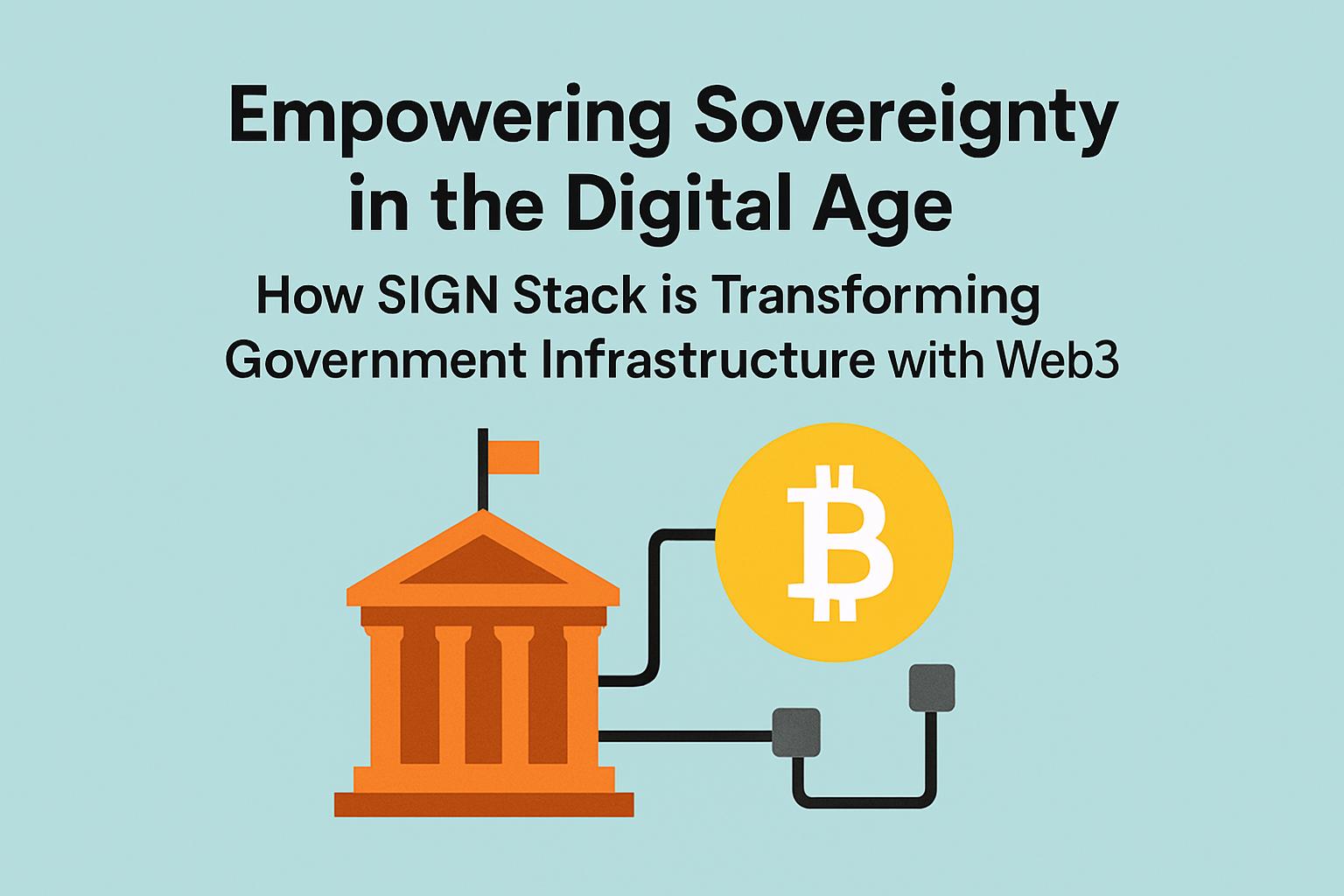Blockchain technology has long been hailed as a game-changer for both financial systems and governmental operations. Yet, for many governments, the transparency it offers comes with significant concerns over control and privacy. Addressing these challenges, the Sign Foundation has introduced the SIGN Stack through their whitepaper, “Sovereign Infrastructure for Global Nations.” This blueprint aims to integrate blockchain into government frameworks, emphasizing sovereignty alongside transparency, thus enabling governments to engage with the global digital economy while maintaining control.
The Core of SIGN Stack: A Tailored Web3 Infrastructure for Nations
SIGN Stack architecture is composed of three core modules:
-
Sovereign Blockchain Infrastructure: It incorporates a hybrid design featuring a transparent Layer 2 chain on public Layer 1 blockchain, alongside a private CBDC blockchain built on Hyperledger Fabric. This dual approach allows governments to manage transparency while retaining control over digital currencies.
-
Sign Protocol: A versatile authentication system that supports cross-chain verification and selective disclosure, integrating identities, credentials, property rights, and more. This facilitates efficient identity management across borders and applications.
-
TokenTable: A digital assets engine tailored for government disbursements in areas like subsidies, social welfare, and education. It ensures precise allocation based on identity attributes, fostering efficient resource management.
Together, these components offer a solution for digital sovereignty in the Web3 era.
Dual-Track Design: Balancing Sovereignty and Transparency
At the heart of SIGN Stack is its flexible deployment:
-
Layer 2 Sovereign Chain: Built upon existing public blockchains, these customizable chains cater to high-transparency needs, such as public voting and grant distributions.
-
Hyperledger Fabric Private CBDC: Central banks control this framework, designed to balance wholesale and retail CBDC transactions, prioritize privacy, and regulatory compliance, while enabling offline payments.
This dual system allows governments to deploy solutions that best fit specific applications while ensuring seamless asset conversion and interoperability through built-in bridging infrastructure.
Revamping Identity: The Sign Protocol
Identity is central to government operations, and the Sign Protocol provides a privacy-focused digital identity framework:
-
Cross-chain identity verification and selective disclosure via Zero-Knowledge Proofs (ZKP).
-
Integration with existing systems like electronic passports and biometric verification.
-
Applicability for passport verification, land deeds, academic credentials, voting, and e-visa applications.
This system enhances domestic digital governance and fosters new cross-border cooperation and border management paradigms.
Streamlining Asset Distribution with TokenTable
The TokenTable system offers programmable asset distribution, providing large-scale allocation with controlled conditions:
-
Identity-driven allocations based on factors like age, region, and income.
-
Supports both private CBDCs for protected subsidies and public blockchains for transparent purposes.
-
Features built-in auditing and reporting to ensure fund use is compliant and transparent.
This enables rapid, decentralized funding delivery across various domains, from education grants to disaster relief.
Economic and Policy Advantages: Boosting Efficiency and Global Integration
The benefits of adopting SIGN Stack extend beyond technology into policy and economic realms:
-
Reduced administrative costs through process automation.
-
Mitigated fraud risks via immutable records and identity verification.
-
Enhanced financial transparency through real-time audits.
-
Increased financial inclusion by integrating unbanked populations into the digital economy easily.
-
Encouraged foreign investment by simplifying business establishment processes and enhancing cross-border transaction transparency.
SIGN Stack serves as a technological lever driving economic modernization.
Secure Deployment: Sovereignty Without Compromise
SIGN Stack ensures secure, phased implementation to avoid systemic risks of a one-time shift:
-
Initial deployment of Layer 2 public blockchain for transparent governmental applications.
-
Piloting CBDC modules on a small scale.
-
Integration of bridge mechanisms and identity modules.
-
Final integration into a comprehensive digital sovereignty system.
The entire system features multi-layered security measures, third-party audits, and bug bounty programs to ensure national-level security requirements are met.
The Path Forward: From Digital Governance to Sovereign Finance
SIGN Stack presents a feasible path for governmental blockchain transformation, combining control with innovation in detailed synergy. As global trends push for digital currency, identity, and governance transformations, SIGN Stack emerges not just as an infrastructure but as a strategic Web3 solution for sovereign states.

![[News] Bitcoin at a Turning Point? 10x Research Signals a Bullish Macro Shift Ahead](https://cryptoexplores.com/wp-content/uploads/2025/06/new20250616.jpg)
![[News] Binance Lists $HOME, the Gas-Free, Bridge-Free All-in-One DeFi App](https://cryptoexplores.com/wp-content/uploads/2025/06/news20250617.jpg)